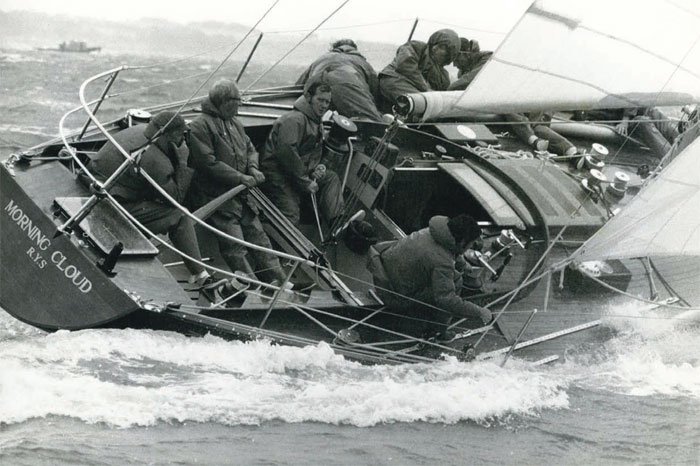Not long to wait
Edward Heath sailed in the 1973 Fastnet Race in 1973 in his S&S-designed MORNING CLOUD III while serving as UK Prime Minister.
Next year’s Rolex Fastnet Race will be the last edition before the ‘big one’... when the 100th Anniversary event starts off Cowes in 2025, so a good time to look back at the journey to date
On Saturday 25th August 1925 seven yachts set off from Ryde, exiting the Solent to the east, past the Forts, rounding the Isle of Wight bound for the Fastnet Rock off southwest Ireland where they turned on their heels for Plymouth to be finished by the Royal Western YC. First home and overall winner, Jolie Brise finished in six days two hours and 45 minutes. This was the first Fastnet Race, known at the time as the Ocean Race, and it would strongly speed up its evolution from being merely a fresh challenge for more adventurous cruising folk into becoming today’s highly refined sport. Famously at a dinner in Plymouth at the race’s conclusion, the Ocean Racing Club was created, with Jolie Brise’s owner Cdr EG Martin its first commodore.
Certainly there had been offshore, even oceanic, races before this. Notably the brave and by today’s standards foolish transatlantic races contested by the brash young millionaires of the New York Yacht Club, the first in 1866 won by a 25- year-old James Gordon Bennett Jnr (from where the English expletive comes), the race best summed up by its departure from New York in December. Remarkably only six died. This was followed by the fourth race of its kind, the more grown-up and part-politically motivated Kaiser’s Cup in 1905, famously won by the 69m three-masted schooner Atlantic.
In fact, it was a reaction to offshore racing apparently only being for the uber-wealthy in giant yachts that promoted the first of the classic 600-mile offshore races: the Bermuda Race. At the time Thomas Fleming Day, editor of The Rudder, was outspoken in extolling the merits of racing small boats offshore. To counter the guffawing, he proved his point by organising the first Bermuda Race, starting from Brooklyn, New York in May 1906. Three boats entered and the 38ft yawl Tamerlaine arrived in Bermuda five days six hours later. Job done.
After a hiatus from 1910 to 1923 the race resumed, starting from New London, Connecticut and it was in 1924 that Weston Martyr, a British WW1 veteran, yachtsman, adventurer and sailing journalist, at the time working as a ship broker in New York, competed aboard the schooner Northern Light. For Martyr this was life-changing and he returned brimming with enthusiasm, writing a seminal letter to Yachting Monthly: ‘It is without question the very finest sport a man can possibly engage in: for to play this game it is necessary to possess in the very highest degree those hallmarks of a true sportsman, skill, courage and endurance…’ He made comparisons with hunting big game, where the sea was the enemy and requiring as great nerve as when climbing mountains. But he also riled the British yachting establishment, throwing down the gauntlet with the observation that no British boat could compete successfully in the Bermuda Race, because of their lack of experience.
It was Martyr who suggested the present-day course to the Fastnet, of a similar distance to the Bermuda Race – 615 miles. This established a trend in offshore races of that length, spawning the Sydney-Hobart (1945), China Sea Race (1962) Middle Sea Race (1968) and more recently the RORC Caribbean 600 (2009), the Aegean 600 (2020) and this year’s Roschier Baltic Sea Race.
Read on at the Seahorse Magazine Website

